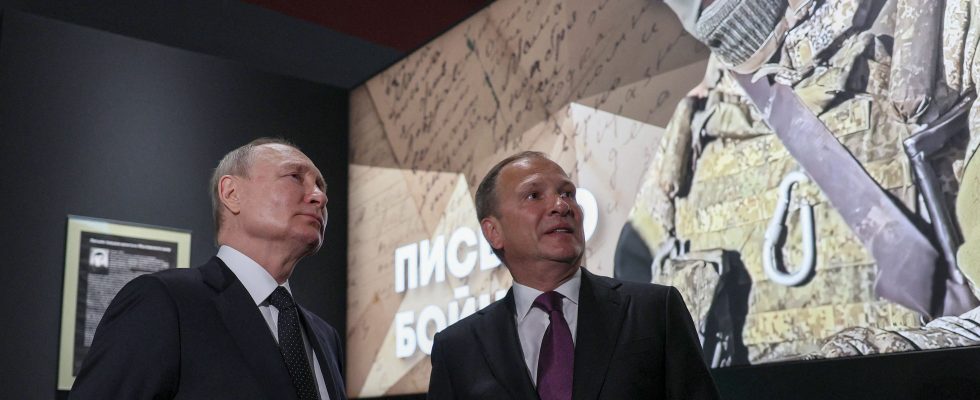From Ukrainian soldiers’ fatigues to the remains of NATO missiles, everything can be found in the new exhibitions on “the Russian special military operation in Ukraine”, organized in many Russian museums since last July 1. “Reports” and “interviews with local residents” of Ukraine are also presented, a initiative proposed by Vladimir Putin last April and organized under the aegis of the Russian Historical Society, created in 1866.
A real “Russian response to the Ukrainian memory offensive”, according to Russian historian Andrei Kozovoi. In 2014, Ukraine mounted such exhibits to show Russian involvement in the war in Donbass after the annexation of Crimea. Between the two countries, the memorial war is also fought around the Holodomor, the great famine which decimated Ukraine in the 1930s, under Stalin, and for which Russia refuses to attribute responsibility to the Soviet dictator.
The first museum of its kind has already opened in the Russian city of Saratov. Like dozens of others, his mission will be to heroize Russian soldiers at the front, report on the crimes of the Ukrainian army and evoke the “genocide of Russian speakers” in the Donbass by a “Nazi Ukrainian state”, all in full compliance with the propaganda guidelines set forth by Vladimir Putin as early as his speech on February 22, 2022, two days before the invasion.
Analogy with the “Great Patriotic War”
The Russian account of the “special operation” in Ukraine was “tested” last summer during an exhibition in Moscow at the Victory Museum, then declined in museums in the provinces, under the title “Ordinary Nazism”. A reference to the cult 1965 film, “Ordinary Fascism,” documenting the rise and fall of fascism in Germany, “which shaped the memory of World War II for generations,” according to Emilia Koustova, historian and lecturer in Russian civilization at the University of Strasbourg.
In these new museums, references to the Great Patriotic War, the name given to the Second World War in Russia, will not fail to legitimize and reassure the population about the destiny of their country, “a besieged fortress that does nothing else than to defend oneself”, deciphers Emilia Koustova. Russia also recycles the same propaganda methods as during the Second World War. “In the Soviet Union, there was a very rapid attempt to document the Second World War, to collect testimonies for museums, with the first initiatives as early as autumn 1941 when a special commission was created”, explains this specialist. An initiative that is part of a “Soviet tradition of defending the writing of history”, for Andrei Kozovoi.
Legitimization of official discourse
Since the rebellion of Yevgueny Prigojine on June 24, the deployment of these new museums is timely for the Kremlin. “This episode also provided another discourse about the war in Ukraine. In his videos, Prigozhin said revolutionary things, such as the fact that there had never been any bombings by the Ukrainians. He also denounced the enrichment of the Russian oligarchs in the Donbass since 2014”, explains Andrei Kozovoi. On June 29, a survey conducted by the Levada Center showed that the proportion of Russians who believe the country is “going in the right direction” is declining: it fell to 53% approval, the lowest score since the Russian invasion in February 2022 .
The official discourse therefore needs to be defended. In addition to announce the modification of history textbooks for Russian schoolchildren from the start of the school year, the “museumification” of the war by Russia is fully integrated into the Kremlin’s propaganda system. The proof is that Sergei Narychkine, the director of foreign intelligence, works hand in hand with the historical commission. to “think” the new museums, he who, in 2017, was already in charge of relativizing the historical heritage of Lenin and the Bolshevik revolution. ” What relationship between Naryshkin and History? wonders Andrei Kozovoi. This is clearly misinformation. In museums, it is likely that we find falsified documents presented as authentic in these museums such as the Minsk protocol, which they will not hesitate to reinterpret in their own way”.
